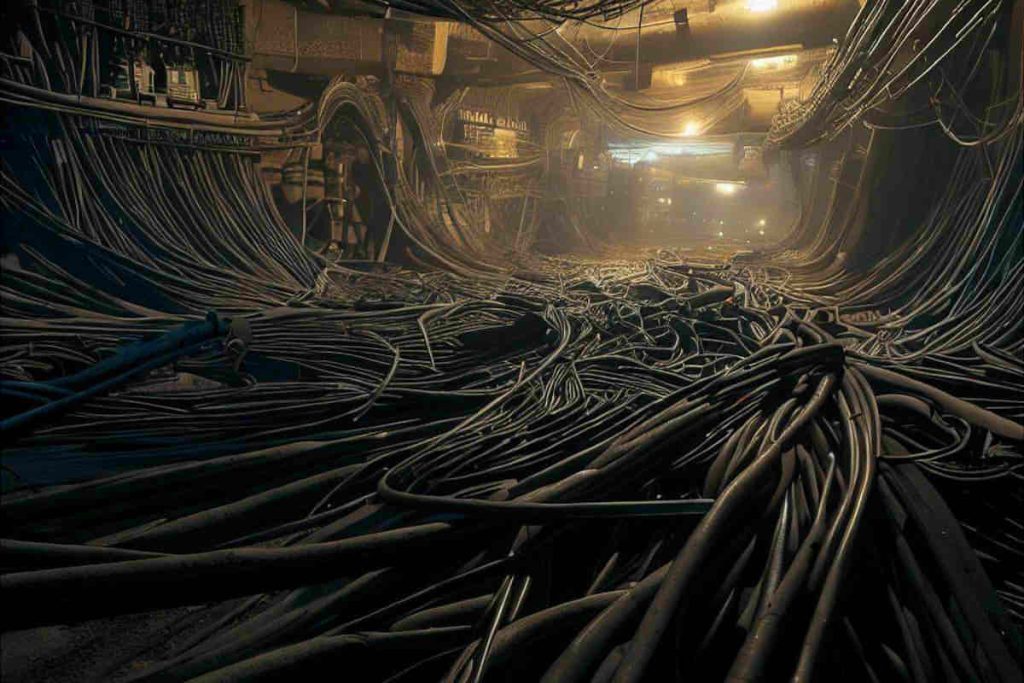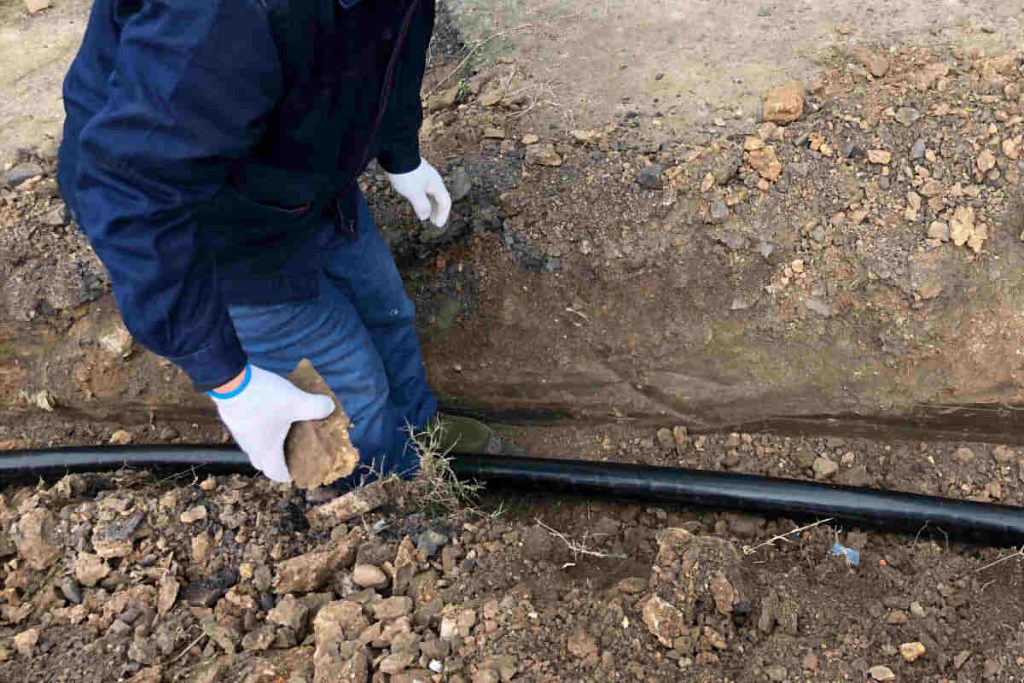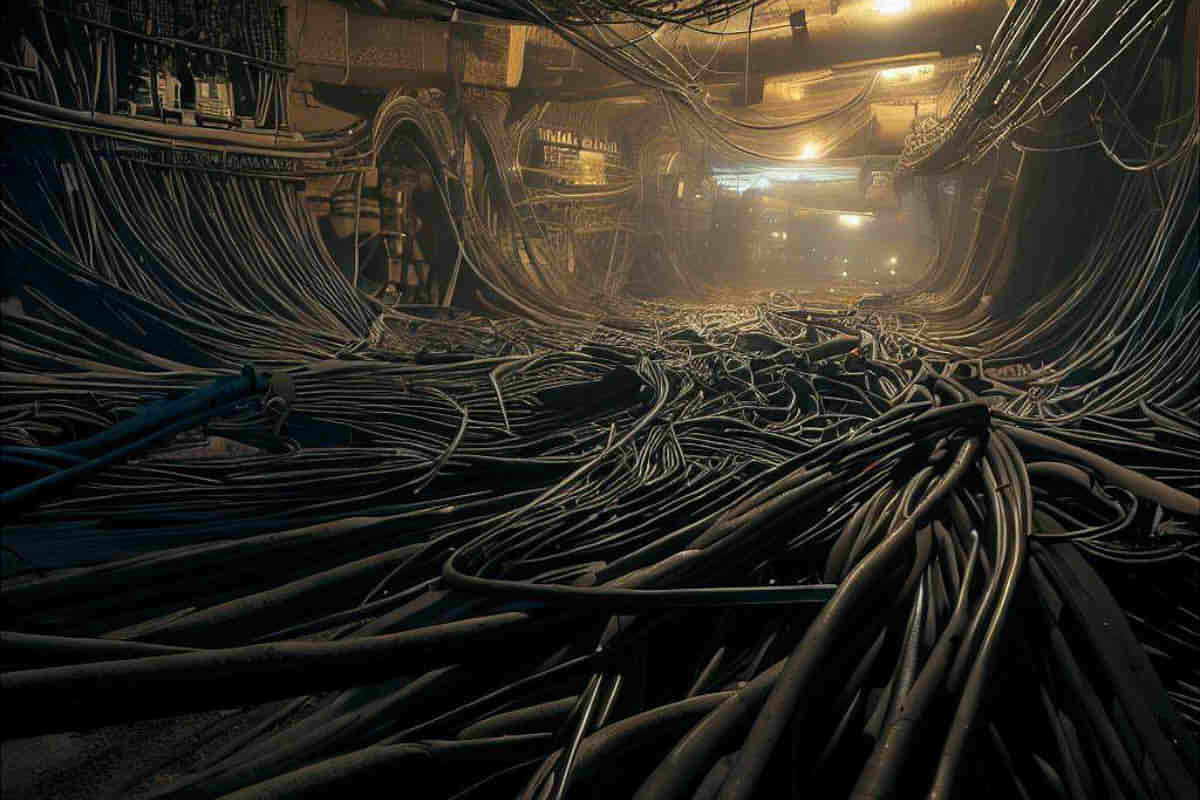high voltage cables, that are a common presence in our daily life, They are often installed on electrical towers in the suburbs. Nevertheless, It is interesting to note that some of the cables continue to use high-voltage transmission even when they enter urban areas.. This has the benefit of effectively reducing energy losses.. Hoy, ZMS takes you deep into underground power cables.
Table of Contents
Can High Voltage Cables Be Placed Underground?
Usually, air is an insulator and earth is a conductor. For overhead cables, you only need to place the naked driver on the power towers. Nevertheless, for underground cables, The conductor needs to be covered by a thick layer of insulation and protection to prevent current leakage.. Due to the complexity of its structure, Underground high voltage cables are much more expensive than overhead high voltage cables.

For direct placement on the ground, the air around the underground cable does not circulate and heat dissipation is difficult, which greatly limits the level of power the cable can carry. Besides, Inspection and repair of cables are more complex and expensive.
Taking into account the costs of manufacturing and maintaining cables, at the moment, Underground high voltage cables are generally only used in large cities. In most cases, High voltage overhead lines are used in suburban areas and then connected to the city's underground power grid using medium and low voltage cables.
Laying of Underground High Voltage Cables
Installation of underground high voltage cables with voltages of 35kV or more can be carried out in several ways: direct installation, trenches and cable tunnels, and pipe ducts. Each of these placement methods has different characteristics and adapts to different construction conditions..
Buried directly
Direct burial has the advantage of being economically efficient and is widely used.. To protect cables installed underground and reduce or prevent possible damage from external forces, cables installed by this method must be of adequate depth.
Burial depth can affect the load capacity of cables. On the one hand, as depth increases, increases the amount of ground the cable needs to traverse to dissipate heat. This increases the thermal resistance, which does not favor the heat dissipation of the cable. Secondly, as burial depth increases, the soil temperature around the cable decreases noticeably, which favors heat dissipation of the cable.
These two factors interact and affect the load capacity of the cable. Nevertheless, usually, The first factor has the greatest influence. Therefore, the deeper the cable is buried, the lower its load capacity.

Usually, for cables with voltages of 35kV or more installed by this method, The depth from the cable sheath to the ground surface should not be less than 700 mm. If it is located under a traffic road or a cultivated area, the depth must be greater, no inferior a 1000 mm.
This installation method is the most common for 10kV medium voltage cables and is also used in some high voltage 35kV/66kV cables installed directly underground.
Trenches and cable tunnels
Cable trenches and cable tunnels are widely used due to their ease of maintenance and repair.. Usually, Cable trenches or cable tunnels are used in 330kV and 500kV high voltage lines, as well as in 220kV cable lines with 6 circuits or more.
In areas such as the entrances and exits of important substations, areas with multiple circuits and situations where 18 or more cables, or when there is a local electricity shortage, the installation of cable tunnels is recommended. Cable tunnels can be classified as open pit tunnels., underground excavation tunnels, top tube tunnels and shield tunnels.

Using cable trenches or cable tunnels as an installation method can effectively reduce mechanical damage to cables and chemical corrosion caused by harmful substances in the ground.. Besides, greatly facilitates maintenance tasks, replacement or addition of underground high voltage electrical cables.
cable ducts
In urban areas with a dense network of underground conduits or in areas where excavation is difficult, the use of cable ducts for installation may be considered. Cable ducts have a lower cost than tunnels, but still offer many of the advantages of the latter. Besides, no need to take into account fire protection.
Cable ducts suffer less damage from external forces, They take up less space and can support heavy loads. Their main function is to protect the cables and they also facilitate the removal and replacement of cables in case of failure..
The use of cable ducts in a row allows interference between cables to be avoided and their construction is relatively simple. Nevertheless, They cannot make direct curves and the heat dissipation conditions are less favorable.

Conclusion
In summary, High voltage cables can be laid completely underground. For laying underground high voltage cables, methods such as direct installation can be used, trenches or tunnels for cables. Direct installation is economical but load capacity decreases with depth. Pipelines and tunnels allow for easier maintenance, being used in high voltage lines and areas with multiple circuits. Cable ducts are an option in urban areas and offer protection, although they have limitations in curves and heat dissipation.
As a last resort, The choice of installation method depends on factors such as cost, the ease of maintenance and the specific conditions of the project in question. Cost can be a determining factor, as some installation methods may be cheaper than others. Nevertheless, It is also essential to consider long-term maintainability, as some methods may require less effort and resources to make repairs or modifications. Besides, the conditions of the project, such as geographical environment and space restrictions, They can also influence the choice of method.
It is necessary to carefully analyze these factors and make informed decisions during practical applications to ensure efficient and reliable installation of underground high-voltage cables..

